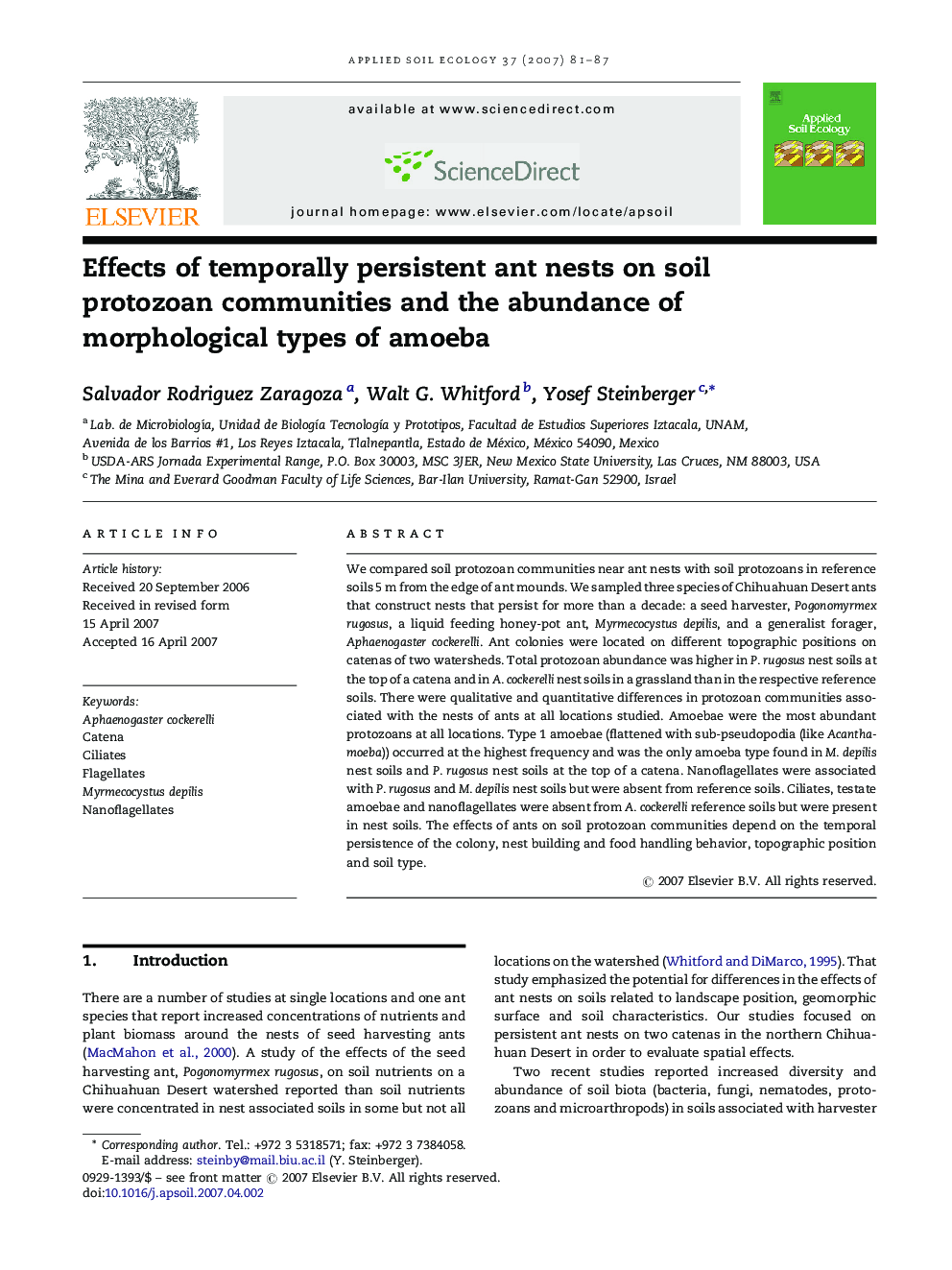| Article ID | Journal | Published Year | Pages | File Type |
|---|---|---|---|---|
| 4383388 | Applied Soil Ecology | 2007 | 7 Pages |
We compared soil protozoan communities near ant nests with soil protozoans in reference soils 5 m from the edge of ant mounds. We sampled three species of Chihuahuan Desert ants that construct nests that persist for more than a decade: a seed harvester, Pogonomyrmex rugosus, a liquid feeding honey-pot ant, Myrmecocystus depilis, and a generalist forager, Aphaenogaster cockerelli. Ant colonies were located on different topographic positions on catenas of two watersheds. Total protozoan abundance was higher in P. rugosus nest soils at the top of a catena and in A. cockerelli nest soils in a grassland than in the respective reference soils. There were qualitative and quantitative differences in protozoan communities associated with the nests of ants at all locations studied. Amoebae were the most abundant protozoans at all locations. Type 1 amoebae (flattened with sub-pseudopodia (like Acanthamoeba)) occurred at the highest frequency and was the only amoeba type found in M. depilis nest soils and P. rugosus nest soils at the top of a catena. Nanoflagellates were associated with P. rugosus and M. depilis nest soils but were absent from reference soils. Ciliates, testate amoebae and nanoflagellates were absent from A. cockerelli reference soils but were present in nest soils. The effects of ants on soil protozoan communities depend on the temporal persistence of the colony, nest building and food handling behavior, topographic position and soil type.
